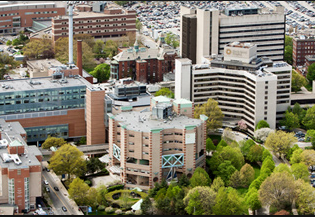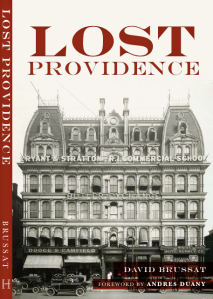
Newly released design concept for Providence research park. (Wexford)
Coincidentally, I read that Wexford Science + Technology signed the dotted line on its purchase of land in Providence’s I-195 corridor just after I’d read the final passage in the conclusion of Brent Brolin’s The Failure of Modern Architecture. Brolin wrote:
By using what exists as a stepping stone for what is to come, the architect can reinforce rather than undermine the character of neighborhoods and cities every time a building is added. If each new building retains something of the old at the same time that it brings something new, the desirable character of a specific place need not be lost.
The extensive “pre-modern” cityscape that still remains is not historical refuse, to be tolerated until it can be bulldozed and replaced by something modern. It is an asset that should be used as a bridge to the future.
Those final lines of Brolin’s book were written in 1976. Forty years later they apply equally well and are yet equally ignored by the design establishment. As you can see from the architectural rendering above, Wexford has chosen to design its research park so as to undermine the character of the Jewelry District rather than to strengthen it. So it will look like every other research park in the nation – which is fine, sort of, in Houston or in Charlotte. But in Providence such design misses the opportunity to differentiate the city from competitors, including Boston, in the development of research parks.

Rhode Island Hospital campus.
In fact, been-there-done-that applies here: The Wexford project looks virtually identical to the ugly Rhode Island Hospital campus just down the road.
All research parks and development projects of that sort base their designs on outmoded concepts that have failed for at least half a century in America. Modern architecture is based on the idea that the Machine Age requires Machine Architecture. But what we got instead was a metaphor for machinery without its efficiency. Modernism is not sustainable, and it has been a contributing factor in the decline of U.S. cities. Architecture of that sort will remain a threat to urban living as long as this idea lasts. Even when individual projects thus designed succeed financially, they often do so at the expense of what is most loved – and most competitive – about their host cities. Charleston, S.C., is doing the same thing. Little by little, Charleston and Providence risk losing what makes them attractive.
Brolin and others understood this decades ago but architects will not listen. And yet the Wexford project is early in its development. If the firm wants to help Providence build on its competitive advantage of beauty and character, and at the same time boost its bottom line, it can easily change its design to work with rather than against the brand of beautiful Rhode Island.



Pingback: Wexford, save 195 corridor | jexpertwriters Research Center (JRC) Group